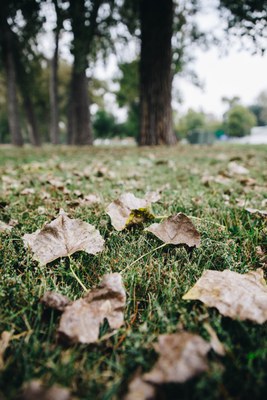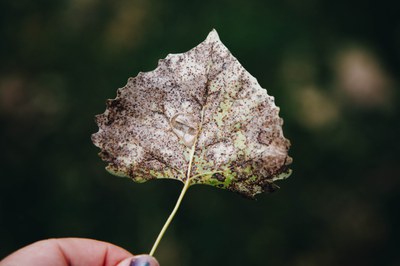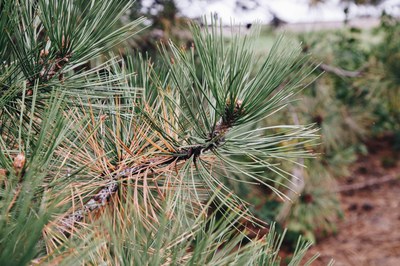Not All Fall Colors Are Due to Changing Seasons
 Fall color is one thing North Dakotans look forward to with the changing seasons. Many are getting out to catch the beautiful warm hues of our state parks, forests, and other recreation destinations before they are gone. This year peak fall color could be expected to arrive around the last week in September in the northern ⅓ of the state, while the southern ⅓ could experience peak color towards the second week of October. However, in some places the cottonwood trees have already experienced leaf fall.
Fall color is one thing North Dakotans look forward to with the changing seasons. Many are getting out to catch the beautiful warm hues of our state parks, forests, and other recreation destinations before they are gone. This year peak fall color could be expected to arrive around the last week in September in the northern ⅓ of the state, while the southern ⅓ could experience peak color towards the second week of October. However, in some places the cottonwood trees have already experienced leaf fall.
Decreasing day length is the initial trigger for the onset of fall leaf color, and the weather this time of year determine how vibrant the leaf colors will be. This year we have seen the cottonwoods in the central part of the state change color rapidly and early. In most cases, this was caused by Melampsora rusts, a series of fungi that develop in and on the leaf and disrupt the normal physiological function in the cells. This affects poplar and willow species. The hyphae from the fungus deposited on the leaf spread like a root system through the leaf's outer surface into the cells underneath, altering their function and causing them to die. This disruption causes leaves to form yellow spots that become necrotic, eventually turning the entire leaf brown. This also leads to premature leaf fall.
Normally, leaf loss to fungal infection is an injury that does not cause significant decline to a tree. This is especially true when leaf symptoms come at the end of the growing season, when leaves have already performed the majority of their energy producing duties. Generally, trees can deal with many seasons of repeated leaf loss in this manner and only be mildly affected over the long term. If the injury occurred over the majority of a tree's crown and early in the growing season, this would prevent the tree from producing the carbohydrates it needs to perform the many functions associated with normal growth and maintenance and would have greater impact. So for these cottonwood trees, we  should expect a good recovery.
should expect a good recovery.
Actually, all species of woody vegetation lose leaves in the fall, even evergreens. Every year, conifers like spruce, pine, and juniper produce new needles on the newly forming stems; this gives them a series of needles that represent consecutive years of growth. Over time, needles produced in the tree’s earlier years become less effective and often become shaded, causing them to decline in function. These needles then eventually fall off. This process is often mistaken for a problem, but similar to their deciduous counterparts, even evergreens lose leaves each fall.
Health issues arise when the evergreen isn’t able to maintain multiple years of needles. Trees that have experienced stressful growing conditions in the past can have as few as two years of green needles remaining after their fall needle loss. This gives little opportunity to deal with another drought or infection. Normally you would see 3-4 years of needles on pines and 5-7 years on spruce for healthy trees.
Your trees may need a little TLC before the winter sets in. If you think your cottonwood leaves fell early because of Melampsora rust, it is a good idea to rake up and dispose of your leaves, so the fungus still on the leaves is removed from the site. This certainly won’t remove the potential of seeing rust occurrence again, but it does have the potential to help in the immediate area of your trees. Similarly, if you have evergreen trees that appear to be struggling from having very few needles on their limbs, you may want to consider watering them going forward. 
By Peter Gag, Forest Health Manager, North Dakota Forest Service


